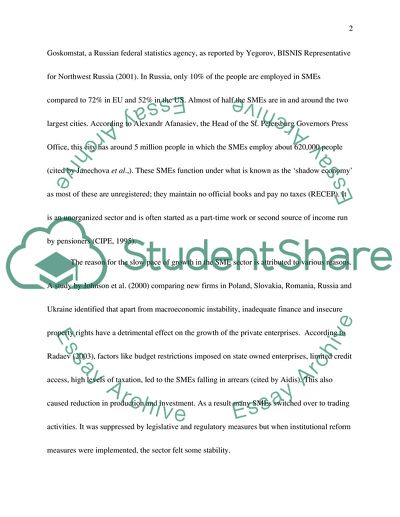Cite this document
(“Small and Medium Enterprises in Russia: problems and solutions Essay”, n.d.)
Small and Medium Enterprises in Russia: problems and solutions Essay. Retrieved from https://studentshare.org/miscellaneous/1536944-small-and-medium-enterprises-in-russia-problems-and-solutions
Small and Medium Enterprises in Russia: problems and solutions Essay. Retrieved from https://studentshare.org/miscellaneous/1536944-small-and-medium-enterprises-in-russia-problems-and-solutions
(Small and Medium Enterprises in Russia: Problems and Solutions Essay)
Small and Medium Enterprises in Russia: Problems and Solutions Essay. https://studentshare.org/miscellaneous/1536944-small-and-medium-enterprises-in-russia-problems-and-solutions.
Small and Medium Enterprises in Russia: Problems and Solutions Essay. https://studentshare.org/miscellaneous/1536944-small-and-medium-enterprises-in-russia-problems-and-solutions.
“Small and Medium Enterprises in Russia: Problems and Solutions Essay”, n.d. https://studentshare.org/miscellaneous/1536944-small-and-medium-enterprises-in-russia-problems-and-solutions.


